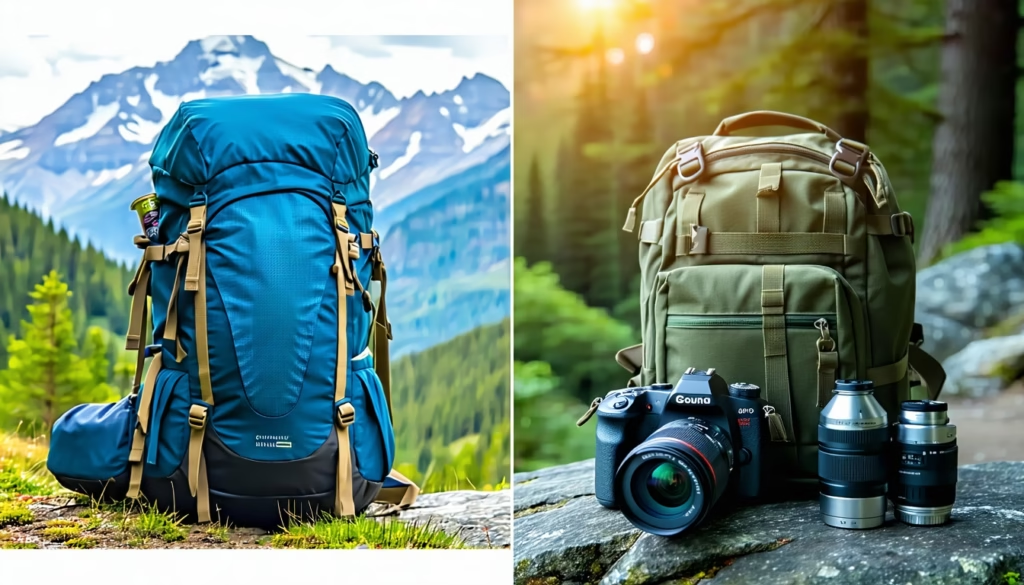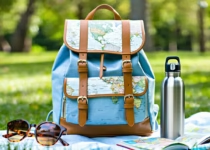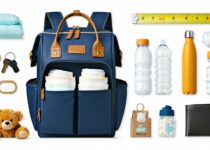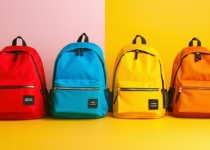The Difference Between Hiking And Camera Backpacks

Imagine you’re gearing up for a sunrise trek, camera in hand, when you pause to consider your backpack choice. You need something rugged for the trail, but gentle on your gear—sound familiar? Understanding the difference between hiking and camera backpacks can save your shoulders and keep your lenses scratch-free.
In this guide, you’ll learn what sets these packs apart, which features matter most, and how to pick the right bag for your next outdoor shoot or weekend hike.
Understanding Backpack Types
Hiking Backpack Overview
Hiking packs are built to carry food, water, layers, and safety gear over long distances. You’ll find a streamlined design, breathable mesh panels, and adjustable straps to distribute weight evenly. Most come with hip belts, sternum straps, and external lash points for trekking poles or sleeping pads. Durability and comfort on rugged trails top the priority list.
Camera Backpack Overview
Camera packs focus on gear protection and quick access. Internally you’ll spot padded dividers, customizable panels, and pockets sized for bodies, lenses, flashes, and memory cards. Many offer side or bottom access doors so you can grab your camera without fully removing the bag. That’s one of the benefits of using a camera backpack over a shoulder bag. For a deeper dive, check out essential features every photographer should want in a backpack.
Comparing Key Features
Storage And Organization
- Hiking Pack: Large main compartment, often with a hydration sleeve. Fewer internal pockets.
- Camera Pack: Multiple cubbies, zippered pouches, lens sleeves, memory card pockets.
Custom dividers in camera packs let you swap layouts when you change setups. It’s pretty clear that best ways to organize lenses inside a camera backpack can make lens swaps faster on the trail.
Comfort And Fit
- Hiking Pack: Padded hip belt handles most of the load, reducing shoulder strain. Adjustable harness adapts to your torso length.
- Camera Pack: Often lighter overall but may lack a robust hip belt. Shoulder straps balance gear close to your spine for stability.
Want to avoid sore shoulders? Peek at how to prevent back pain when carrying camera gear.
Durability And Weather Resistance
- Hiking Pack: Built with heavyweight nylon or ripstop fabric. Many include integrated rain covers or treated materials for water resistance.
- Camera Pack: Soft-shell exteriors, often with padded foam and water-resistant zippers. You’ll want to see what to look for in a waterproof camera backpack and follow these weatherproofing tips for your camera backpack.
Weight And Portability
- Hiking Pack: Can range from ultra-light (1–2 pounds) to heavy expedition models (4+ pounds empty).
- Camera Pack: Typically 2–3 pounds empty, plus gear weight. Side-access bags add a bit more bulk but boost convenience.
Use a digital luggage scale to check the total carry weight before setting off.
Use Case Scenarios
Day Hikes And Outdoor Adventures
If you’re on a half-day trail or scrambling up a waterfall, a lightweight hiking pack with a small camera pouch might do the trick. You’ll carry water, snacks, a jacket, and a camera tucked into a soft case or quick-draw holster. This combo keeps you agile and prevents lens changes from slowing you down.
Photography Trips And Shoots
Planning a dedicated photo excursion—think sunrise alpenglow or bird-watching? Grab a camera-specific backpack so each lens, body, and accessory has its own spot. You’ll appreciate the padded dividers, easy-reach panels, and built-in memory card pockets during fast-moving shoots.
Blending Hiking And Camera Needs
Hybrid packs strive to marry both worlds. You get external pockets for a water bottle or trekking poles, plus internal camera cubes for your kit. Some designs let you remove the camera insert, turning the bag into a pure daypack. If you carry a tripod, check how to carry a tripod using a camera backpack. To maintain balance when mixing gear, follow tips on how to balance weight in a camera backpack.
Choosing The Right Backpack
- Define Your Adventure
- Multi-day trek: Prioritize a high-capacity hiking pack, then add a compact camera cube.
- Photo-focused day trip: Look for side-access camera packs with hip belts.
- Test Fit And Comfort
- Pack your kit, adjust straps, walk around the store or yard.
- Feel for pressure points, then tweak harness and belt.
- Check Airline And Park Regulations
- Need a carry-on? Review how to travel with a camera backpack on a plane.
- Some national parks limit pack size or weight.
- Budget And Brand Reputation
- Read reviews, compare warranty policies, and factor in replacement cost if a zipper or buckle fails.
Not sure whether to protect your gear in a pack or a hard case? Learn more in camera backpack vs. hard case: which is better.
Frequently Asked Questions
What Makes A Hiking Backpack Different From A Camera Backpack?
A hiking pack focuses on load support, ventilation, and external attachments. A camera bag prioritizes padded compartments, quick access, and gear protection.
Can I Use A Camera Backpack For Hiking?
Yes, if you’re on a short trail and your pack has a supportive belt. For multi-day hikes you might want the extra capacity and ventilation of a dedicated trekking pack.
Should I Choose A Hybrid Backpack?
Hybrids offer flexibility: remove the camera insert for pure hiking or slide it in when you need gear protection. They’re ideal if you switch roles often.
How Much Weight Can A Camera Backpack Hold?
Most carry 20–40 pounds of gear without strain. Check manufacturer specs, then include your heaviest lens and accessories when testing fit.
Are Camera Backpacks Waterproof?
Many feature water-resistant fabrics and taped seams. For heavy rain, pack your bag in a rain cover or follow weatherproofing tips for your camera backpack.
How Do I Organize Lenses Inside A Camera Backpack?
Use removable dividers to create snug cubbies. Store heavier lenses at the bottom, and keep smaller accessories in zippered pouches. For extra ideas, see best ways to organize lenses inside a camera backpack.
How Do I Prevent Back Pain With A Heavier Pack?
Distribute weight evenly between hips and shoulders. Tighten your hip belt first, then sternum strap. Take breaks, and practice good posture when you hike.
Conclusion
Choosing between a hiking pack and a camera backpack boils down to your priorities: comfort and capacity for the trail, or protection and organization for your gear. Hybrids can bridge the gap, but understanding each design’s strengths helps you pack smarter.
Next time you head out, pick the bag that fits your adventure and never miss a shot. Share your favorite pack tips below so fellow photographers and hikers can benefit too!


